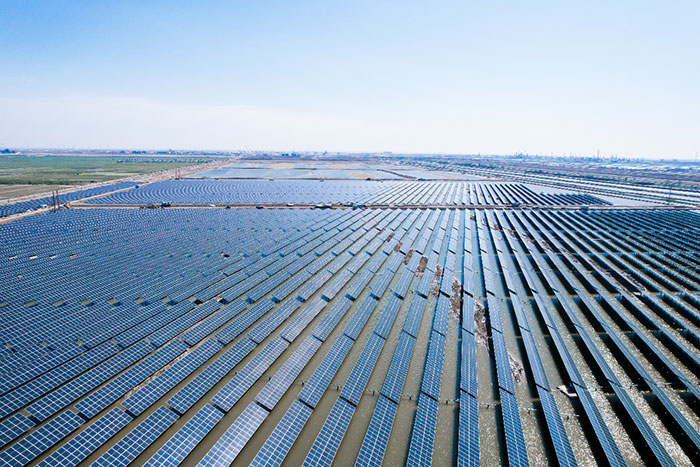The Fishery Photovoltaic Project, with total installed capacity of 70MW, in Nandagang industry park in Cangzhou, Hebei province, has been connected to the grid recently, fully equipped with Trina Solar's Vertex 670W modules and n-type Vertex 690W modules. For Trina Solar’s customers Vertex 600W+ ultra-high power modules represent extremely good value with their high reliability and outstanding LCOE.

70MW fishery PV project using Trina Solar’s Vertex 600W+ modules (source: Trina Solar)
Cangzhou is near the coast of the Bohai Sea, with Beijing and Tianjin to the north, and in a location that features saline-alkali soils and mudflats. In setting up the project to service the local fisheries industry, the project owner opted to use 210 Vertex ultra-high power modules. The project, covering130 hectares, is expected to generate power of 1,292 hours a year for 25 years, provide about 128,000 MWh green power a year and reduce carbon dioxide emissions by about 107,000 tons.
In an era of full grid parity, the 210 Vertex modules are the low-LCOE leader. They feature non-destructive cutting, high-density interconnection and other techniques. With their high power, high efficiency and high reliability, the 210 Vertex modules can effectively reduce utility project system costs, increase system efficiency and guarantee project returns.
As a type of floating solar system, the combination of fishery and photovoltaic power generation ensures power generation with fishing activities. The project is installed over fish ponds, which will continue to be used for fish and shrimp breeding after the system is connected to the grid. Photovoltaic panels floating on the water can shade the fish pond, reduce water temperature, cut evaporation and effectively block strong sunlight, which significantly reduces the incidence of fish dying as a result of elevated water temperatures. The project thus produces great economic and environmental benefits.
Wood Mackenzie, an energy consulting firm, forecasts that global floating solar demand will grow by an average of 22 percent a year between 2019 and 2024, providing more possibilities for using PV.
